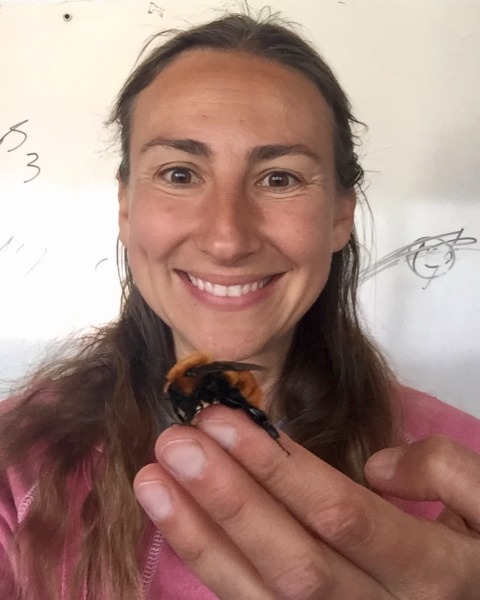Student 10-Minute Presentation
Systematics, Evolution, and Biodiversity
Student
Student Competition
Assessing the habitat requirements and body condition of imperiled bumble bee species in the upper Midwest
- EI
Erika J. Ibarra-Garibay
Iowa State University
Ames, Iowa 
Kelsey Shepherd
Lab Technician
Iowa State University
Ames, Iowa- SP
Stephanie Paris
Iowa State University
Ames, Iowa - AT
Anna Tucker
U.S. Geological Survey/Iowa State University
Ames, Iowa 
Amy Toth
Professor
Iowa State University
Ames, Iowa
Presenting Author(s)
Co-Author(s)
Bumble bee populations are facing severe declines due to multiple environmental stressors. The rusty patched bumble bee (Bombus affinis), the first federally listed bumble bee species in the United States, has experienced an 87% reduction in its population. Similarly, the American bumble bee (B. pensylvanicus) has faced significant declines, prompting its petition for endangered status in 2021. Assessing habitat use and individual health indicators of these two species is vital for creating effective conservation plans. In 2022 and 2023, surveys were conducted at 57 sites across four landscape types in Iowa. Several site-level features were identified and recorded, along with key flowering plant species. B. affinis and B. pensylvanicus individuals were captured and non-destructively sampled, with health indicators such as body size, wing wear, and head width recorded. Landscape and site-level features revealed that B. affinis was positively associated with forested areas, whereas B. pensylvanicus was negatively associated with forest and developed land. Body condition results suggest B. affinis individuals were smaller in grassland-dominated landscapes, whereas B. pensylvanicus individuals were smaller in developed areas, indicating these landscapes may lack adequate nutritional resources. Unexpectedly, both species showed negative correlations between size and plant species richness, suggesting higher plant species richness may not always be beneficial, possibly due to floral preferences. Additionally, the presence of Apis was related to smaller body size in both species, possibly indicating competition for resources. This study highlights the need for targeted conservation strategies that consider the unique ecological requirements of different bumble bee species.

.png)

